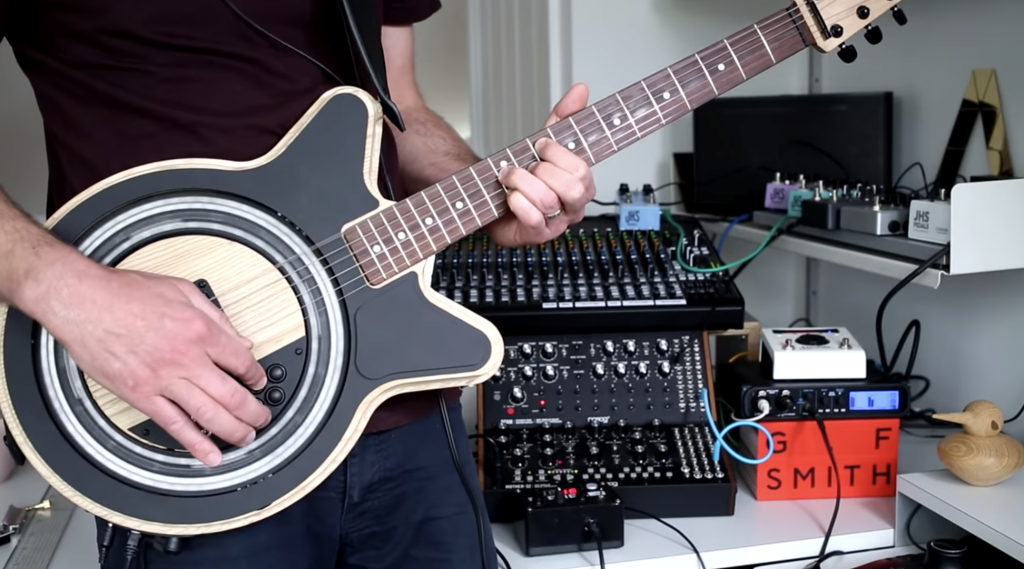The guitar is an instrument that has proved rather hard to innovate. Most changes have to do with its bodily composition — whether it’s cardboard or carbon fiber — or by changing the way that it transmits sounds. It’s rare to find a new way to play something that has been around for hundreds of years — but that’s what the Circle Guitar has gone and done.
Going full Circle
And that’s because the Circle Guitar, the invention of Anthony Dickens (as well as engineers Jacob Boast, Luke Perkin and Marie Tricaud), offers players a whole new way to play. Rather than picking strings with your fingers, the guitar can be picked from behind by the rotating section built into the body. The best bit is that how it’s played can be altered. Rather than just sounding like a guitar, it makes a pretty convincing techno instrument. And that’s just the start.
The Circle Guitar plays the strings at 250bpm, but that’s using a single plectrum slotted into the circle arrangement spinning in the body. And there’s space for up to 128 plectrums, giving you a theoretical 32,000 strums played per minute. But that’s not all it does.
Each string also has its own output, captured and a controlled by a hexaphonic or ‘multi-channel’ pickup. “Each string has its own output that can be amplified, recorded and processed individually. You can pan each string across the mix, blend different effects across the strings or set up rhythmic gates to turn individual strings on and off in time with Circles set speed. The options for audio processing using guitar effects pedals, amplifiers, modular synthesis or digital audio workstations are vast,” says Dickens.
The only thing that’s not cool? You can’t buy one yet, and there’s no word on when that’ll happen or what it’ll cost for a Circle Guitar. But you can register your interest, in the event that you need to own the most technological axes since the electric guitar.




